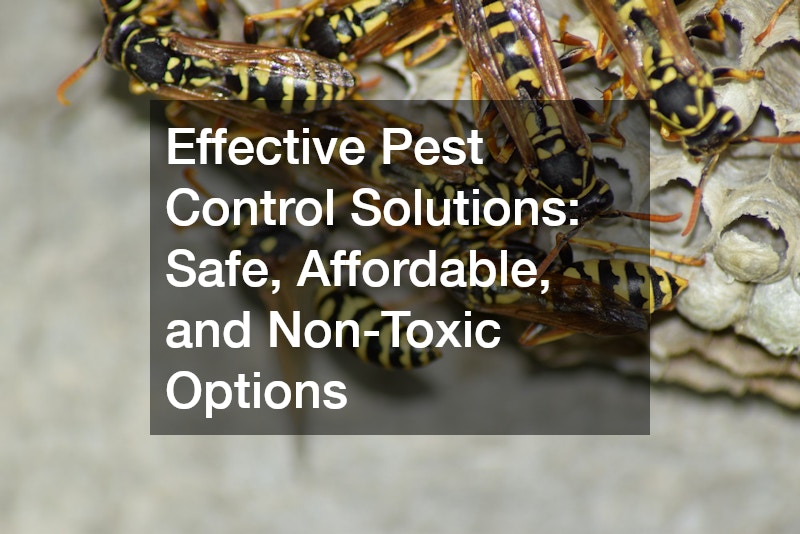
Dealing with pests in your home or business can be a daunting task, but finding an effective solution that is both safe and affordable can make a significant difference. In today’s market, there are numerous pest control solutions available, but it’s essential to choose options that not only address the pest problem but also align with your budget and health preferences. Here’s a guide to navigating pest control prices while ensuring you select non-toxic and economical methods.
Understanding Pest Control Prices
When considering pest control, one of the first factors to examine is the cost. Pest control prices can vary widely based on several factors, including the type of pests, the infestation’s severity, and the treatment methods.
Generally, pest control services are offered at a range of price points, making it crucial to understand what you are paying for and what is included in the service.
For residential and commercial properties alike, pest control prices often reflect the complexity and scale of the problem. Basic treatments for minor infestations might be more affordable, while extensive treatments for significant infestations can be more costly. Additionally, ongoing maintenance or regular treatments can affect overall costs. It’s important to obtain detailed quotes from multiple pest control providers to compare services and prices effectively.
Safe and Non-Toxic Pest Control Options
Health and safety should be a top priority when selecting pest control solutions. Non-toxic pest control products are designed to be effective while minimizing risk to humans and pets. These products use natural ingredients or low-risk chemicals to address pest problems without causing harm to the environment or occupants.
Some popular non-toxic pest control methods include:
Natural Predators: Introducing natural predators, such as ladybugs or nematodes, can help control pest populations without the use of harmful chemicals. This method is particularly useful for managing pests in gardens or outdoor areas.
Essential Oils: Essential oils like peppermint, eucalyptus, and lavender can act as natural repellents for various pests. These oils can be used in diffusers or mixed with water to create sprays that deter insects.
Diatomaceous Earth: This natural powder is made from fossilized algae and is effective against insects with exoskeletons, such as ants and cockroaches. It works by dehydrating the pests, making it a safe and chemical-free option.
Traps and Baits: Non-toxic traps and baits can capture or kill pests without the need for hazardous chemicals. These products are available for various pests, from rodents to insects, and are often a more controlled solution.
Balancing Cost and Effectiveness
When evaluating pest control options, it’s essential to balance cost with effectiveness. While non-toxic solutions may sometimes have a higher upfront cost, they can be a more sustainable and health-conscious choice. Additionally, many pest control companies offer package deals or maintenance plans that can help manage costs over time.
DIY methods for minor infestations are also worth considering, which can be more cost-effective than professional services. However, professional intervention may be necessary for severe infestations to ensure a thorough and long-lasting solution.
Conclusion
Selecting the right pest control solution involves understanding the various options available and evaluating pest control prices in relation to the effectiveness and safety of the treatments. By opting for non-toxic and affordable pest control solutions, you can address pest problems effectively while maintaining a safe and healthy environment. Whether you choose professional services or DIY methods, ensuring that you make an informed decision will lead to better results and peace of mind.
.

